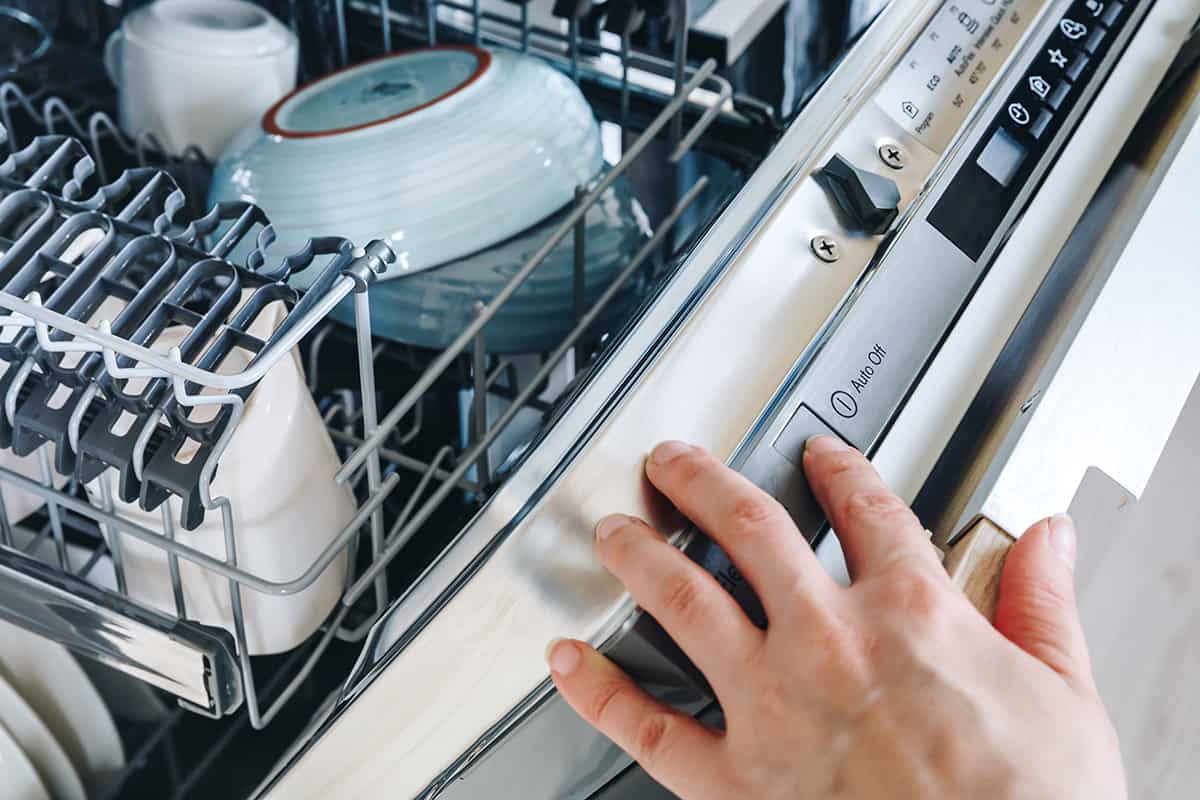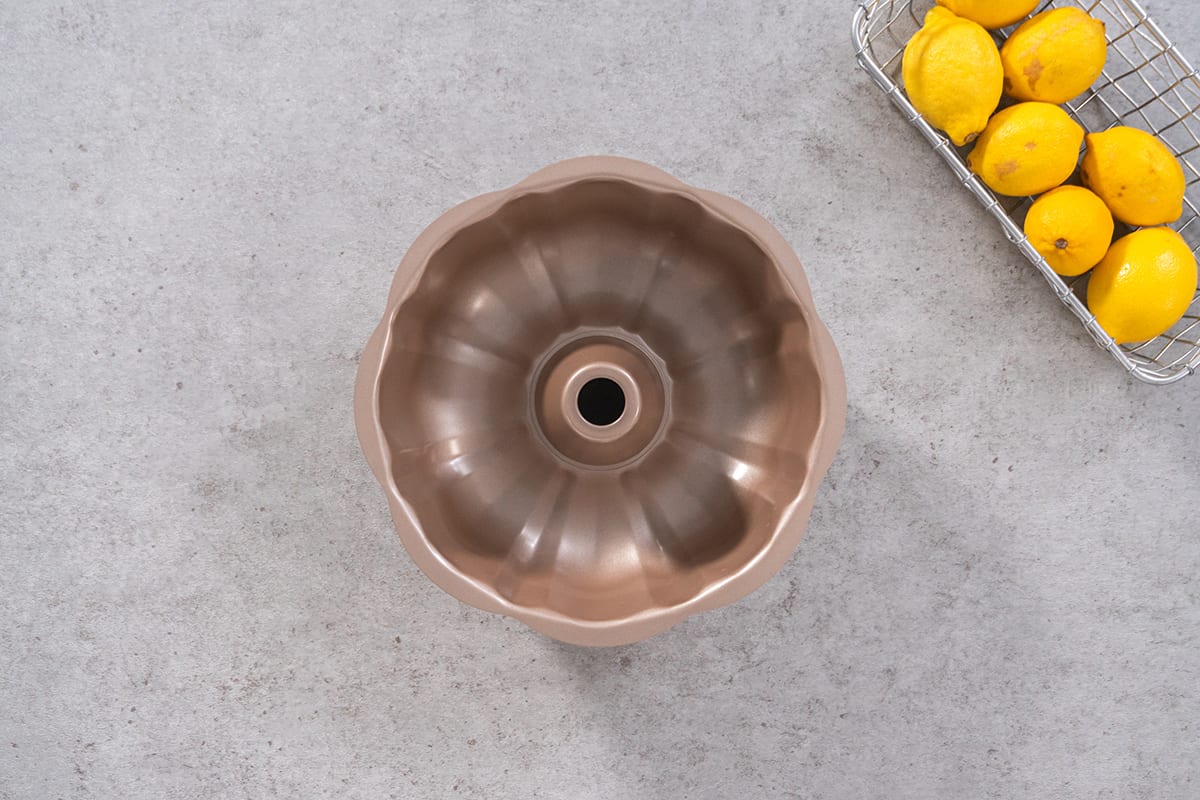Bundt pans are great for several things. First, they are used to make, well, Bundt cake, which is a classic for tea parties and brunches. You can also make gelatin desserts and meatloaf in a Bundt pan if you don’t mind soiling it with non-cake ingredients. But when you’re done cooking with a Bundt pan, can you wash it in a dishwasher?
The type of material the Bundt pan is made of will determine whether or not it is dishwasher-safe. Glass Bundt pans are not dishwasher-safe, whereas silicone and metal Bundt pans are. However, regardless of what the pan is made of, you should wash it by hand.
In this guide, I’ll explain which types of Bundt pans are dishwasher-safe, how to wash a Bundt pan by hand, and how you should treat Bundt pans with a nonstick coating.
What Is a Bundt Pan?
A Bundt pan is a type of pan that is used for baking Bundt cake. You can tell what a Bundt pan is by its fluted sides that give a baked cake a decorative top. The flutes also let you know where to slice the cake for even portion sizes.
Bundt pans can be made of virtually any type of common bakeware material. Some of the most commonly used materials for Bundt pans include aluminum, stainless steel, cast iron, glass, and silicone. There are also Bundt pans that have a nonstick coating on the inside, which makes it way easier to unmold your cake prior to serving.
Are Bundt Pans Dishwasher-Safe?
The biggest problem people have with Bundt pans is washing them. Sure, you can soak your pan in a basin of soapy water, but what if you want to wash the pan in a dishwasher? Ultimately, it depends on what type of material was used to make your Bundt pan since different materials react differently to heat and rapid temperature changes.
Here’s a quick rundown of what materials are used to make Bundt pans and whether or not they are dishwasher-safe.
| Bundt Pan Material | Dishwasher-Safe | Remarks |
| Aluminum | Yes | If you don’t mind the risk of it becoming damaged by adjacent cookware, then you can wash it in a dishwasher. |
| Stainless steel | Yes | Heated water and temperature changes may scratch its surface. |
| Cast iron | No | The heated water and detergent in dishwashers will chip away at the seasoning. |
| Tempered glass | Yes | Make sure the glass is at room temperature before placing it inside your dishwasher to reduce the risk of thermal shock |
| Silicone | Yes | Completely dishwasher-safe. |
Should You Wash a Bundt Pan in a Dishwasher?

Now, can you and should you are two very different things? Just because you can wash a Bundt pan in a dishwasher (at least in the case of aluminum, stainless steel, tempered glass, and silicone pans), that doesn’t mean you should.
The problem with Bundt pans is the fluted interior. It can be difficult for a dishwasher to spray soapy water into the recesses of a Bundt pan, and you might end up with bits of soggy cake after the wash cycle has completed.
So, to guarantee that your Bundt pan is completely clean and ready to make another cake, you should wash it by hand.
How to Wash a Bundt Pan by Hand
Washing a Bundt pan is not unlike washing any other type of baking dish. And just like other baking dishes, you should always allow the pan to come down to room temperature before dunking it in a sink or basin of water. Doing this will reduce the risk of thermal shock, so your Bundt pan can retain its beautiful fluted interior for much longer.
Anyway, after the Bundt pan has cooled down, here’s how you wash it.
- Fill a tub with water and regular dish soap. Make sure the tub is large enough to submerge the entire Bundt pan.
- Drop the Bundt pan into the kitchen sink and let it soak for 5 to 10 minutes. Allow the soapy water to chip away at the caked-on debris.
- Scrub the Bundt pan with a sponge. You can start with the rough side of the sponge to help loosen caked-on crumbs inside the pan. After that, use the soft side of the sponge to scrub the inside and outside of the Bundt pan gently. The fluted interior of the pan is a great hiding spot for crumbs and bacteria, so spend a few moments carefully scrubbing the ridges with the sponge.
- Rinse the pan in cold water and let it air dry. Lastly, flush away the soapy and crumb residue from the pan by running cold water over it. Make sure the pan is completely clean before transferring it to a dishrack to air-dry.
However, depending on the material of the Bundt pan, there are a few things you should be aware of.
Be extra careful when scrubbing aluminum Bundt pans since they can be pretty flimsy. At most, you should apply the same amount of pressure as you would when brushing your teeth.
Make sure you are absolutely certain that your glass Bundt pan is at room temperature before placing it in the basin of water. If the pan is still hot, the cold of the water may cause a tiny crack in the pan, and the crack will grow over time.
If your Bundt pan is made of cast iron, go easy on the soap. Using too much soap and scrubbing vigorously can remove the nonstick seasoning. When this happens, it can be impossible to unmold a Bundt cake from the pan without tearing the top.
Feel free to flip your silicone Bundt pan over the clean ridges. Alternatively, you can use your fingers to push the corners inward to give them a rounded, easy-to-clean shape.
How to Wash a Teflon Bundt Pan
The thing about Teflon is that using wire or even nylon brushes can scratch the nonstick coating. If you see silvery streaks in the middle of the Teflon coating, then you’ve scrubbed the pan too vigorously or used an abrasive brush.
Teflon can be dishwasher-safe, but you should follow the washing instructions from the manufacturer. So, wash it by hand, but make sure you only use the soft side of the sponge!
Other Tips to Clean a Bundt Pan
As long as you are careful, you should be able to use your Bundt pan for a long time. Here are some things to keep in mind:
- Use a soft cloth to clean the pan. Don’t use abrasive cleaners or metal utensils on it. (If necessary, use silicone or nylon scrubbers.)
- Don’t put the pan in the dishwasher or ovens with temperatures above 350 degrees Fahrenheit (177 degrees Celsius).
- Don’t put on high heat when cooking with them; they will warp and deteriorate faster if used this way. Also, avoid using the microwave or stovetop when cooking with your pans!






